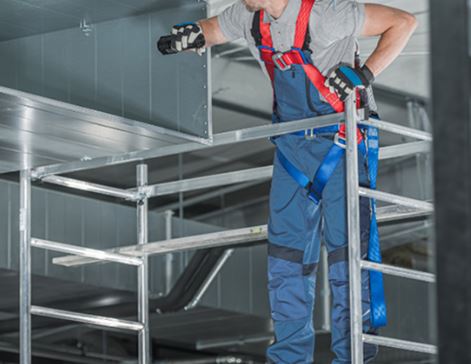As a contractor, do you have a Safety Program that will satisfy OSHA requirements?
Many small to medium companies without a designated safety coordinator on staff do not have a formal, written safety program and may have not realized the need for one. For example, HVAC and plumbing technicians face job hazards each workday and as an employer, it is your responsibility to provide a safe work environment. Providing a safe working environment requires each company to evaluate their job tasks and determine the associated hazards.

You are then required, as the employer, to provide safety training to ensure the employees know how to conduct their work safely. A written safety program is the roadmap to achieving this.
OSHA standards address many safety hazards specifically. However, if there is no specific standard, OSHA uses the General Duty Clause to cite employers for unsafe work situations:
Section 5(a)(1) of the Occupational Safety and Health Act (OSHA) of 1970 states that employers are required to provide their employees with a place of employment that “is free from recognizable hazards that are causing or likely to cause death or serious harm to employees.”
Industry standards should also be consulted for your safety program. Organizations such as the National Fire Protection Association publish standards for addressing a variety of workplace hazards. For example, the NFPA publishes NFPA 70E Standard for Electrical Safety in the Workplace, which applies to HVAC technicians as well as electricians. Applying the guidelines in standards such as NFPA 70E will assist organizations in complying with the OSHA standard for electrical safety.
So where do you start?
Although they don’t address all exposures associated with your workplace, below are suggested guidelines* for HVAC and plumbing contractors which should be found in a written safety manual. It is not a complete list as you are responsible for determining what hazards exist in your workplace, but it is a good start to the development of your safety program.
As your safety program develops, be sure to train your employees on each policy and procedure. Review the OSHA standards to determine how often training should be conducted. Some training is required only once, but other topics are required to be repeated at designated intervals. Keep track of the date of each training session and who attended so you have a record that it took place and you can determine if anyone was missed.
Safety programs often sit in a binder getting dusty on a shelf. Once created, use it as a working document by reviewing it periodically and updating it as industry practices and OSHA standards are updated. It is meant to be a guide book for assisting you in keeping your employees uninjured and safe, which will have a positive impact on your bottom line.
Accidents happen. Mistakes are made. All affect your bottom line. Thankfully, Pekin Insurance, for example, has a LOSS CONTROL PROGRAM that helps reduce and often eliminate the occurrences of these undesired events.

